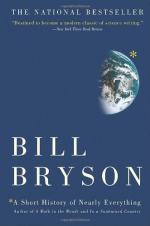
|
| Name: _________________________ | Period: ___________________ |
This quiz consists of 5 multiple choice and 5 short answer questions through Part 5,Chapter 23.
Multiple Choice Questions
1. Who suggested that mass and energy are actually the same thing?
(a) Joseph Lister.
(b) Albert Einstein.
(c) Thomas Edison.
(d) Charles Darwin.
2. In the 1960s, what did Bob Christiansen realize about Yellowstone National Park after observing NASA-supplied images?
(a) Practically the whole park is a volcano.
(b) Most of the park was created by a massive earthquake.
(c) The park was carved by moving glaciers.
(d) The park holds thousands of volcanoes.
3. When did the last supervolcano erupt on Earth?
(a) 23,000 years ago.
(b) 9,000 years ago.
(c) 1,100 years ago.
(d) 74,000 years ago.
4. Which famous scientist was once an unknown patent clerk in Switzerland?
(a) Joseph Lister.
(b) Thomas Edison.
(c) Charles Darwin.
(d) Albert Einstein.
5. Max Planck ignored those who urged him to avoid physics and ended up doing groundbreaking work on:
(a) Electromagnetism.
(b) Optics.
(c) Acceleration.
(d) Entropy.
Short Answer Questions
1. What followed the last supervolcanic eruption on Earth in the region that is now northern Sumatra?
2. Approximately how many okapi live in the rain forests of Zaire?
3. Vesto Slipher's work at the Lowell Observatory in Arizona led him to discover that distant stars are moving away from us, with the farthest stars moving the fastest, suggesting that the universe is:
4. When entomologist Terry Erwin collected insect samples from 19 rain forest trees, how many different varieties of beetles did he find?
5. According to Bryson, what percentage of all animal and plant life is yet to be discovered?
|
This section contains 242 words (approx. 1 page at 300 words per page) |

|




